
The Battle of Midway was a major naval battle in the Pacific Theater of World War II that took place on 4–7 June 1942, six months after Japan's attack on Pearl Harbor and one month after the Battle of the Coral Sea. The Japanese Combined Fleet under the command of Isoroku Yamamoto suffered a decisive defeat by the U.S. Pacific Fleet near Midway Atoll, about 1,300 mi northwest of Oahu. Yamamoto had intended to capture Midway and lure out and destroy the Pacific Fleet, especially the U.S. aircraft carriers which had escaped damage at Pearl Harbor.
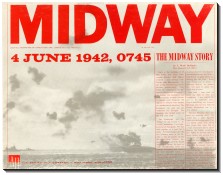
Midway is a board wargame published by Avalon Hill in 1964 that simulates the Battle of Midway during World War II.

USS Enterprise (CV-6) was a Yorktown-class carrier built for the United States Navy during the 1930s. She was the seventh U.S. Navy vessel of that name. Colloquially called "The Big E", she was the sixth aircraft carrier of the United States Navy. Launched in 1936, she was the only Yorktown-class and one of only three American fleet carriers commissioned before World War II to survive the war.

The Douglas SBD Dauntless is a World War II American naval scout plane and dive bomber that was manufactured by Douglas Aircraft from 1940 through 1944. The SBD was the United States Navy's main carrier-based scout/dive bomber from mid-1940 through mid-1944. The SBD was also flown by the United States Marine Corps, both from land air bases and aircraft carriers. The SBD is best remembered as the bomber that delivered the fatal blows to the Japanese carriers at the Battle of Midway in June 1942. The type earned its nickname "Slow But Deadly" during this period.
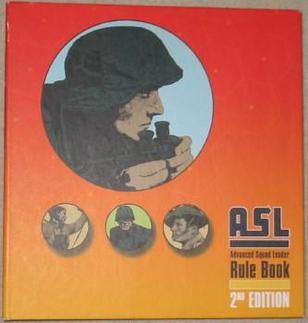
Advanced Squad Leader (ASL) is a tactical-level board wargame, originally marketed by Avalon Hill Games, that simulates actions of squad sized units in World War II. It is a detailed game system for two or more players. Components include the ASL Rulebook and various games called modules. ASL modules provide the standard equipment for playing ASL, including geomorphic mapboards and counters. The mapboards are divided into hexagons to regulate fire and movement, and depict generic terrain that can represent different historical locations. The counters are cardboard pieces that depict squads of soldiers, crews, individual leaders, support weapons, heavy weapons, and vehicles.
Federation and Empire (F&E) is a strategic-level board wargame set in the fictional Star Fleet Universe spinoff of Star Trek, currently published by Amarillo Design Bureau Inc. (ADB). It is a stand-alone product, but has sometimes been considered the official campaign generator for Star Fleet Battles.

The Longest Day is a board wargame published by Avalon Hill in 1979 that simulates the Allied D-Day invasion of June 1944 and the subsequent Normandy campaign during World War II until August 31st, 1944.

Squad Leader is a tactical level board war game originally published by Avalon Hill in 1977. It was designed by John Hill and simulates on infantry combat in Europe during World War II. One of the most complex war games of its time, Squad Leader is the natural extension of the trend towards greater realism initiated by several earlier games, including Avalon Hill's own PanzerBlitz and Panzer Leader. Those two earlier games were slightly larger in scope, with counters representing platoons and map hexes measuring 250 metres across, compared to Squad Leader's 40 meter hexes and squad sized units.

War at Sea is a strategic board wargame depicting the naval war in the Atlantic during World War II, published by Jedko Games in 1975, and subsequently republished by Avalon Hill in 1976 and more recently by L2 Design Group in 2007.
Carrier is a solitaire wargame published in 1990 by Victory Games, a subsidiary of Avalon Hill.
Midway is a board wargame published Avalon Hill in 1991 as a revision of a 1964 edition that simulates the Battle of Midway from World War II.

Battle of the Bulge is a board wargame published by Avalon Hill (AH) in 1965 that simulates the World War II battle of the same name. General Anthony McAuliffe (ret.), who had been commanding officer at Bastogne during the Battle of the Bulge, was a consultant during the game's development. The game proved popular and sold more than 120,000 copies, but was dogged by criticisms of historical inaccuracies, and was finally replaced by a completely new edition in 1981. A third edition in 1991 was released as part of the Smithsonian American History Series.

Air Assault on Crete is a wargame published by Avalon Hill in 1977 that simulates the Battle of Crete during World War II.
Empire of The Rising Sun (RSN–1995) is a board wargame published originally by Avalon Hill, designed by Bruce Harper with much input by Dave Casper into the naval warfare rules. This is the Pacific War companion game to Advanced Third Reich (A3R), using similar rules, and containing once again a copy of Ultra magazine with a synopsis of the game. A previous version, occasionally discussed in the pages of The General magazine, had been in development the late 1970s, but was never published.
Storm Over Arnhem is a 1981 board wargame designed by Courtney F. Allen, published by the Avalon Hill game company, and depicts the battle for Arnhem bridge over the Lower Rhine river during Operation Market Garden in World War II. This battle was fought between elements of the British 1st Airborne Division and elements of the German Bocholt Battalion and 9th and 10th SS Panzer Divisions. The plan was for the airborne forces to seize and hold the Arnhem bridge for two days, before being relieved by the British XXX Corps. However, Operation Market Garden failed in numerous places, and the airborne troops were never relieved. They did however achieve more than their objective by capturing and holding the northern end of the Arnhem Bridge with some 700+ men for four days.
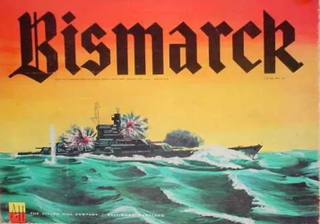
Bismarck is a board wargame published by Avalon Hill in 1962 that simulates the hunt for the Bismarck.
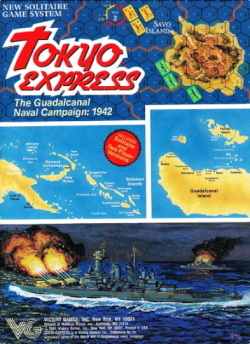
Tokyo Express: The Guadalcanal Naval Campaign – 1942 is a solitaire board wargame published Victory Games in 1988.

MBT is a board wargame published by Avalon Hill in 1989 that simulates hypothetical World War Three tank combat between NATO and Warsaw Pact forces in Western Europe. A second edition was published by GMT Games in 2016.
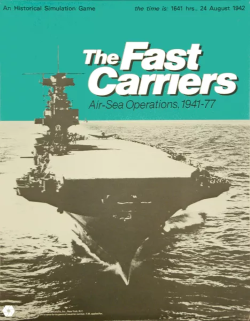
The Fast Carriers, subtitled "Air-Sea Operations, 1941–77" is a board wargame published by Simulations Publications Inc. (SPI) in 1975 that simulates naval combat involving aircraft carriers from 1941 to the mid-1970s.

Seapower & the State, subtitled "A Strategic Study of World War Three at Sea, 1984–1994", is a Cold War-era board wargame published by Simulations Canada in 1982 that simulates potential naval warfare during a hypothetical World War III.
















